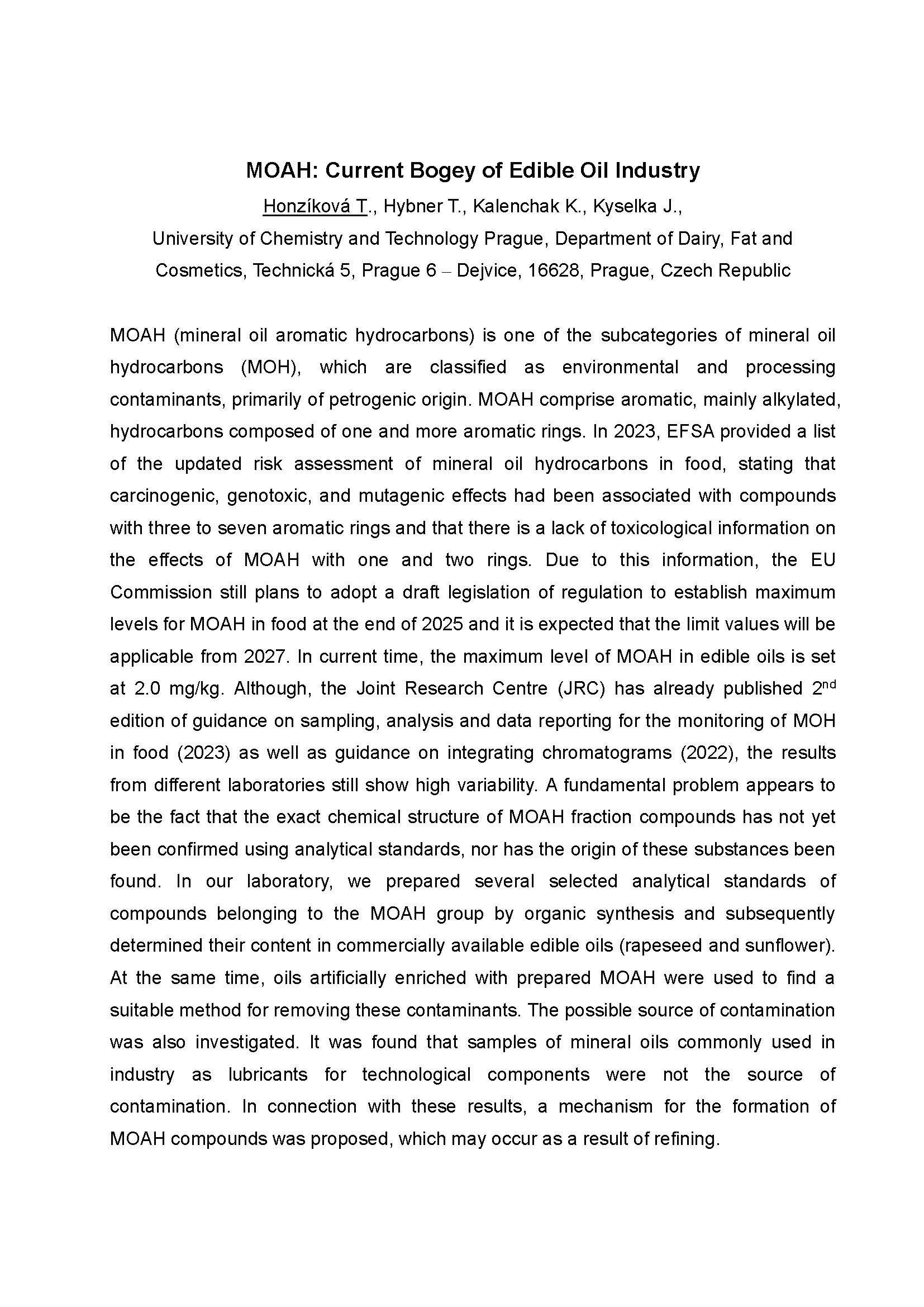MOAH (mineral oil aromatic hydrocarbons) is one of the subcategories of mineral oil hydrocarbons (MOH), which are classified as environmental and processing contaminants, primarily of petrogenic origin. MOAH comprise aromatic, mainly alkylated, hydrocarbons composed of one and more aromatic rings. In 2023, EFSA provided a list of the updated risk assessment of mineral oil hydrocarbons in food, stating that carcinogenic, genotoxic, and mutagenic effects had been associated with compounds with three to seven aromatic rings and that there is a lack of toxicological information on the effects of MOAH with one and two rings.
Due to this information, the EU Commission still plans to adopt a draft legislation of regulation to establish maximum levels for MOAH in food at the end of 2025 and it is expected that the limit values will be applicable from 2027. In current time, the maximum level of MOAH in edible oils is set at 2.0 mg/kg. Although, the Joint Research Centre (JRC) has already published 2nd edition of guidance on sampling, analysis and data reporting for the monitoring of MOH in food (2023) as well as guidance on integrating chromatograms (2022), the results from different laboratories still show high variability. A fundamental problem appears to be the fact that the exact chemical structure of MOAH fraction compounds has not yet been confirmed using analytical standards, nor has the origin of these substances been found. In our laboratory, we prepared several selected analytical standards of compounds belonging to the MOAH group by organic synthesis and subsequently determined their content in commercially available edible oils (rapeseed and sunflower). At the same time, oils artificially enriched with prepared MOAH were used to find a suitable method for removing these contaminants. The possible source of contamination was also investigated. It was found that samples of mineral oils commonly used in industry as lubricants for technological components were not the source of contamination. In connection with these results, a mechanism for the formation of MOAH compounds was proposed, which may occur as a result of refining.
